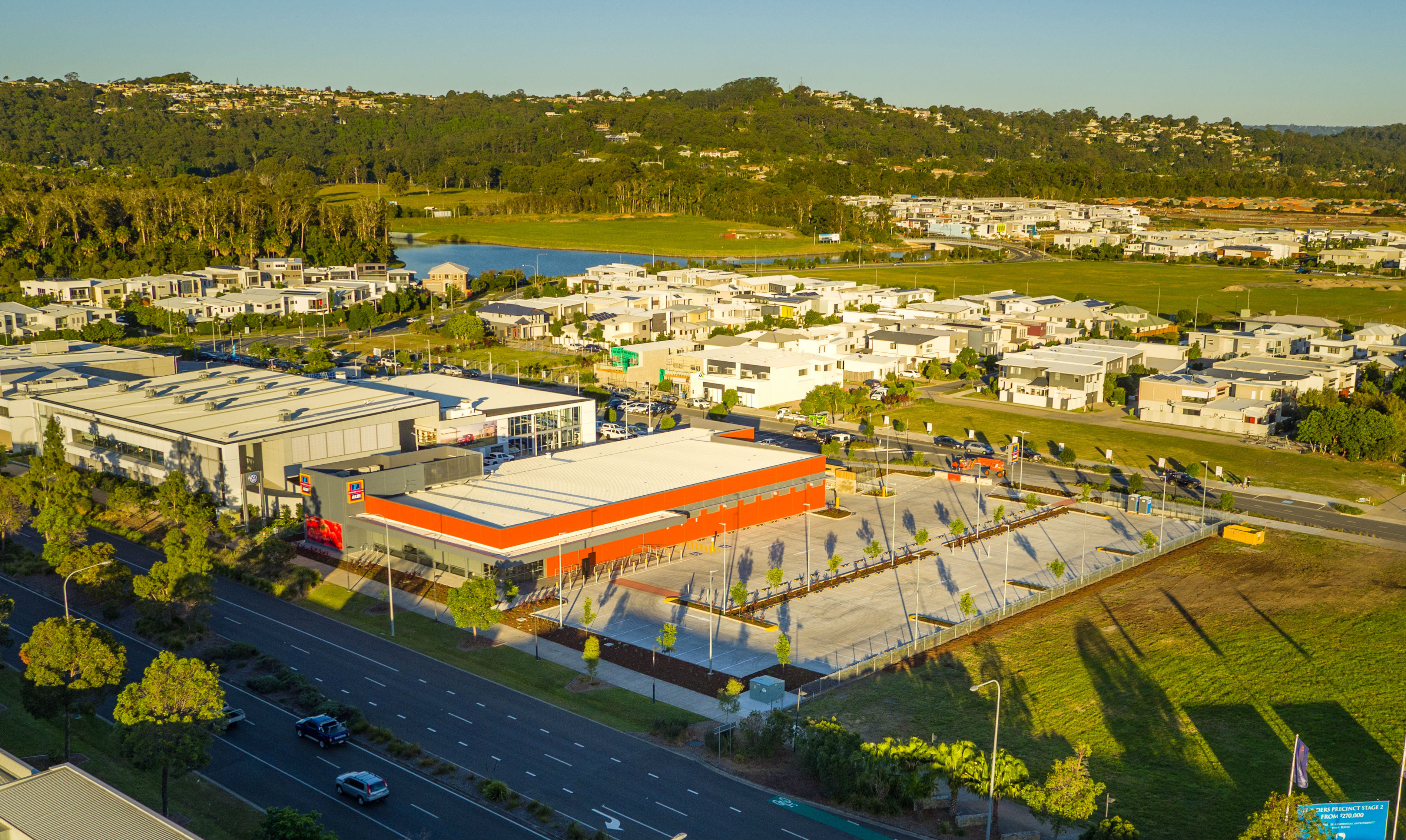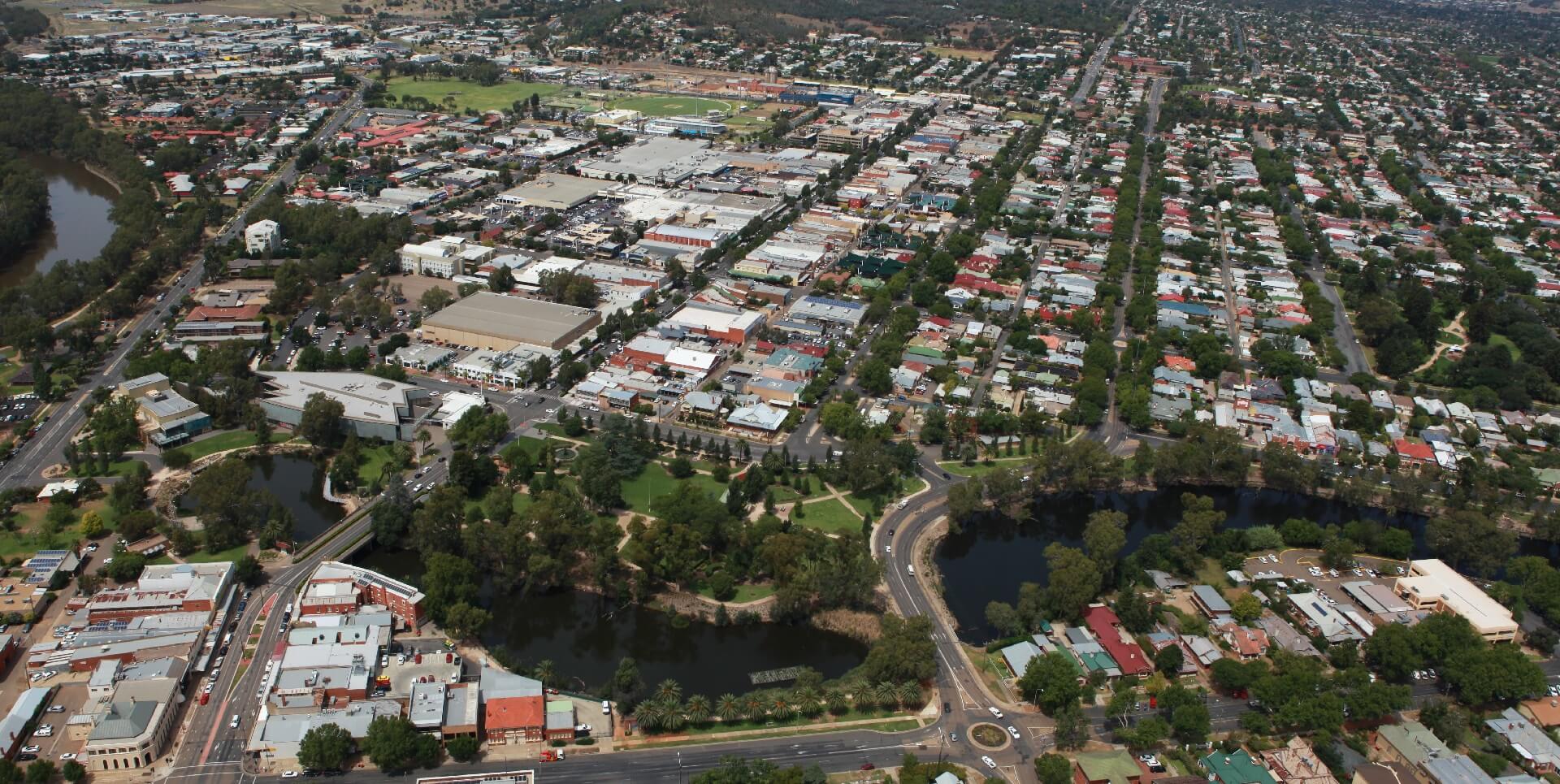Street trees drastically reduce urban heat in Dubbo
What happens when an Australian inland regional council strategically plants street trees on one of its hottest and busiest streets, using CRCWSC research and recommended tools as a guide?
The council reduces land surface temperature by a massive 20˚C and secures other health and environmental benefits.
This is exactly what Dubbo Regional Council achieved through the recent Dubbo Urban Heat Island Amelioration Project.

The challenge
The Dubbo region is hot and projected to get hotter. Its CBD, like many other precincts, is subject to the urban heat island effect or UHI, in which impervious (hard) surfaces absorb heat but do not store water, leading to higher temperatures compared with rural areas where natural vegetation is more prevalent.
Dubbo Regional Council is committed to increasing the town’s urban tree canopy to mitigate the UHI effect and to adapt to climate change, so they joined forces with the CRCWSC to plant trees on one of Dubbo’s highest risk CBD streets, Bultje Street. Bultje Street has high heat exposure and high pedestrian traffic, particularly from elderly residents visiting a health and medical precinct. Elderly residents are known to be more vulnerable to heat illness and mortality.
The plan
The Dubbo Urban Heat Island Amelioration Project had seven aims:
- Improve local amenity and community resilience to climate change
- Reduce ambient summer temperatures by increasing shading to road and footpaths
- Reduce the risk of heat exposure and related illnesses and mortality to vulnerable communities
- Reduce the risk of UV exposure to users of the Bultje Street precinct by increasing canopy cover by 300% over 15 years
- Reduce heating and cooling energy costs to occupants of buildings along Bultje Street
- Increase longevity of local road infrastructure
- Reduce and/or delay stormwater peak flows and nutrient loads.
The approach
The project team used two tools and CRCWSC research to evaluate the current situation and model the future scenario:
- the i-Tree Canopy Tool from the United States Department of Agriculture, which helped to determine canopy cover in Bultje Street before the project started. The tool indicated canopy covered 2.8% of the total area
- the CRCWSC’s TARGET tool, which quantified and helped to visualise the UHI effect mitigation benefits of the proposed project (‘before’ and ‘after’ scenarios).
The innovations
Strategic tree planting
The project team replaced existing Kurrajong trees with Japanese Elm ‘Green Vase’ cultivar trees, to maximise shade in the warmer months and solar access in the winter months. While not native to Australia, the shape and structure of the elm help reduce the risk of vehicle damage to the branches, and they can tolerate heat, air pollution and periods of drought.
Water sensitive urban design (WSUD)
Since providing an alternate source of water is essential for dry climates like Dubbo’s, the project team used WSUD to capture stormwater runoff from the nearby streets and provide a passive and non-potable source of water for irrigating the trees.

Tree pits
Tree pits where used around the trees, to reduce stormwater and pollutant loads discharging to the Macquarie River.
The result
The project innovations have resulted in a reduction in land surface temperature from 58ºC near hard surfaces to 38ºC under and near tree canopies, and a decrease in ultraviolet (UV) exposure to pedestrians over time. Stormwater management and amenity were also achieved.
The lessons
The Dubbo case study has many lessons for other councils considering cooling strategies, but the main takeaway message is to not underestimate the value of collaboration among stakeholders or the power of strategically planting even a single tree.

We congratulate Dubbo Regional Council on its foresight and action in recognising the value of street trees in mitigating high urban heat. You can find out more about the project here.
And, if you’d like more information about the value of street trees to UHI mitigation, download the CRCWSC’s Trees for a cool city, which guides practitioners in strategically planting trees. While all greening options can play a role in cooling the urban environment, trees are particularly effective because they provide cooling through transpiration and shade.